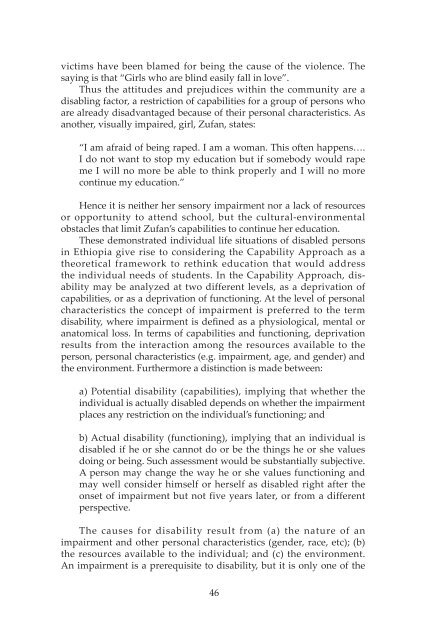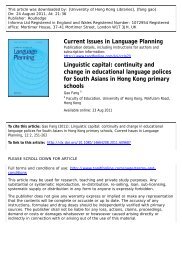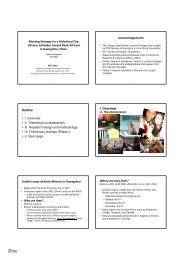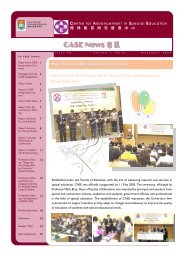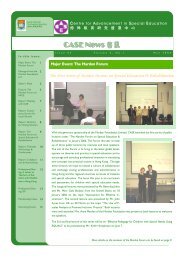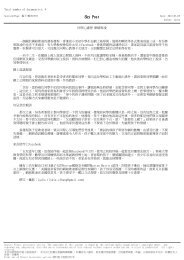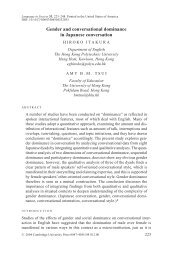Comparative Education Bulletin - Faculty of Education - The ...
Comparative Education Bulletin - Faculty of Education - The ...
Comparative Education Bulletin - Faculty of Education - The ...
You also want an ePaper? Increase the reach of your titles
YUMPU automatically turns print PDFs into web optimized ePapers that Google loves.
victims have been blamed for being the cause <strong>of</strong> the violence. <strong>The</strong><br />
saying is that “Girls who are blind easily fall in love”.<br />
Thus the attitudes and prejudices within the community are a<br />
disabling factor, a restriction <strong>of</strong> capabilities for a group <strong>of</strong> persons who<br />
are already disadvantaged because <strong>of</strong> their personal characteristics. As<br />
another, visually impaired, girl, Zufan, states:<br />
“I am afraid <strong>of</strong> being raped. I am a woman. This <strong>of</strong>ten happens….<br />
I do not want to stop my education but if somebody would rape<br />
me I will no more be able to think properly and I will no more<br />
continue my education.”<br />
Hence it is neither her sensory impairment nor a lack <strong>of</strong> resources<br />
or opportunity to attend school, but the cultural-environmental<br />
obstacles that limit Zufan’s capabilities to continue her education.<br />
<strong>The</strong>se demonstrated individual life situations <strong>of</strong> disabled persons<br />
in Ethiopia give rise to considering the Capability Approach as a<br />
theoretical framework to rethink education that would address<br />
the individual needs <strong>of</strong> students. In the Capability Approach, disability<br />
may be analyzed at two different levels, as a deprivation <strong>of</strong><br />
capabilities, or as a deprivation <strong>of</strong> functioning. At the level <strong>of</strong> personal<br />
characteristics the concept <strong>of</strong> impairment is preferred to the term<br />
disability, where impairment is defined as a physiological, mental or<br />
anatomical loss. In terms <strong>of</strong> capabilities and functioning, deprivation<br />
results from the interaction among the resources available to the<br />
person, personal characteristics (e.g. impairment, age, and gender) and<br />
the environment. Furthermore a distinction is made between:<br />
a) Potential disability (capabilities), implying that whether the<br />
individual is actually disabled depends on whether the impairment<br />
places any restriction on the individual’s functioning; and<br />
b) Actual disability (functioning), implying that an individual is<br />
disabled if he or she cannot do or be the things he or she values<br />
doing or being. Such assessment would be substantially subjective.<br />
A person may change the way he or she values functioning and<br />
may well consider himself or herself as disabled right after the<br />
onset <strong>of</strong> impairment but not five years later, or from a different<br />
perspective.<br />
<strong>The</strong> causes for disability result from (a) the nature <strong>of</strong> an<br />
impairment and other personal characteristics (gender, race, etc); (b)<br />
the resources available to the individual; and (c) the environment.<br />
An impairment is a prerequisite to disability, but it is only one <strong>of</strong> the<br />
46


